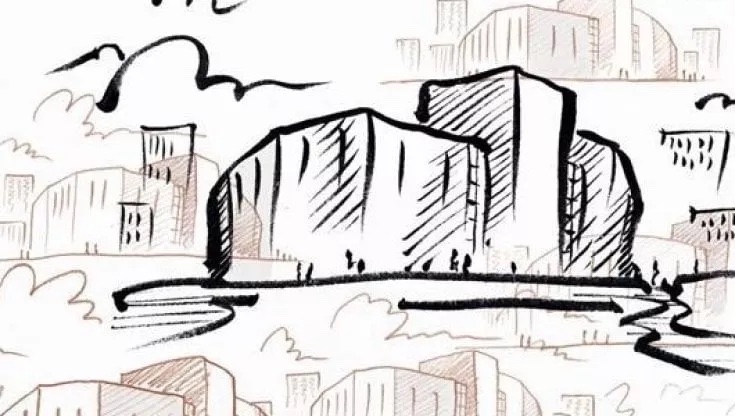Let’s play to discover the invisible cities of each novel
An essay by Matteo Pericoli
Architect, illustrator and author, in his new book the author offers a true guide to exploring literary architecture
by Lara Crinò

That the act of narrating can be likened, metaphorically, to that of designing a building, a neighborhood, even a city, is something we all know. We know it from having experienced it, as amateur or professional writers from a very young age: were we not perhaps encouraged, when we are about to put our thoughts on paper, with an expression that comes from architecture itself: “fai la scaletta,” (make a ladder) as if writing were placing rungs to climb higher? We know this, too, from studying it. What are literary theory and semiotics talking about, if not how we “construct,” again a metaphor of sorts, the text?
In his new book The Great Living Museum of the Imagination (il Saggiatore), however, Matteo Pericoli, an architect, designer and author, takes it a step further by offering, as the subtitle suggests, a true Guide to Exploring Literary Architecture.
Stemming from the experience of a workshop with a group of creative writing students from the Scuola Holden in Turin, this essay is a real experiment, starting with the format. Indeed, in the first few pages, the reader is asked to approach the reading as if exploring a museum, complete with a map, moving from a “ground floor,” which serves to introduce the book’s purposes, to a “first floor” and then to a “second floor” in which these purposes are spread out and then applied to a series of literary works. The basic thesis suggested by Matteo Pericoli is this: since when we read we are always, more or less consciously, visitors of an imaginary space, then it is possible to attribute to our impression of a certain text a certain form. If we can explore its various parts with our minds, then we are not only able to describe them verbally but also to create spaces, voids and solids, that are the architectural equivalent of the story we are reading.
It is no longer a matter of merely visualizing settings: indeed, as Pericoli immediately clarifies, he is not interested in the “so-called locations” of a novel, because “focusing on them means, in general, missing an opportunity.” What the author proposes is something different: working out an architecture that reflects the structure of the text. How is it done? To find out, one must first get up to the first floor of this museum book, where, with a historical overview, Matteo Pericoli explains how every architecture, from the primitive hut to the Parthenon, from Brunelleschi’s dome to Le Corbusier’s Villa Savoye, is in itself a story that needs to be interpreted.
Then, by continuing to the second floor, we can explore twelve interpretations of literary architectures: twelve works that are transformed into buildings. The catalog is varied and interesting, so much so that any good reader will want to read or reread the texts being discussed: from Joseph Conrad’s Heart of Darkness to Elena Ferrante’s My Brilliant Friend, from Friedrich Dürrenmatt’s The Judge and His Hangman to Annie Ernaux’s Les Années, each work is drawn as if it were an installation or a building. There is also Italo Calvino, with his The Baron in the Trees.
These are evocative projects, mind games, ideal palaces and cities that overlap with the real ones in which we live and move. If you like the game, is the message, you can go ahead on your own, accumulating new literary architectures. And you will find that the books you love are cathedrals, humble courtyards, or invisible cities. Perhaps, the places where you will feel most at home.


